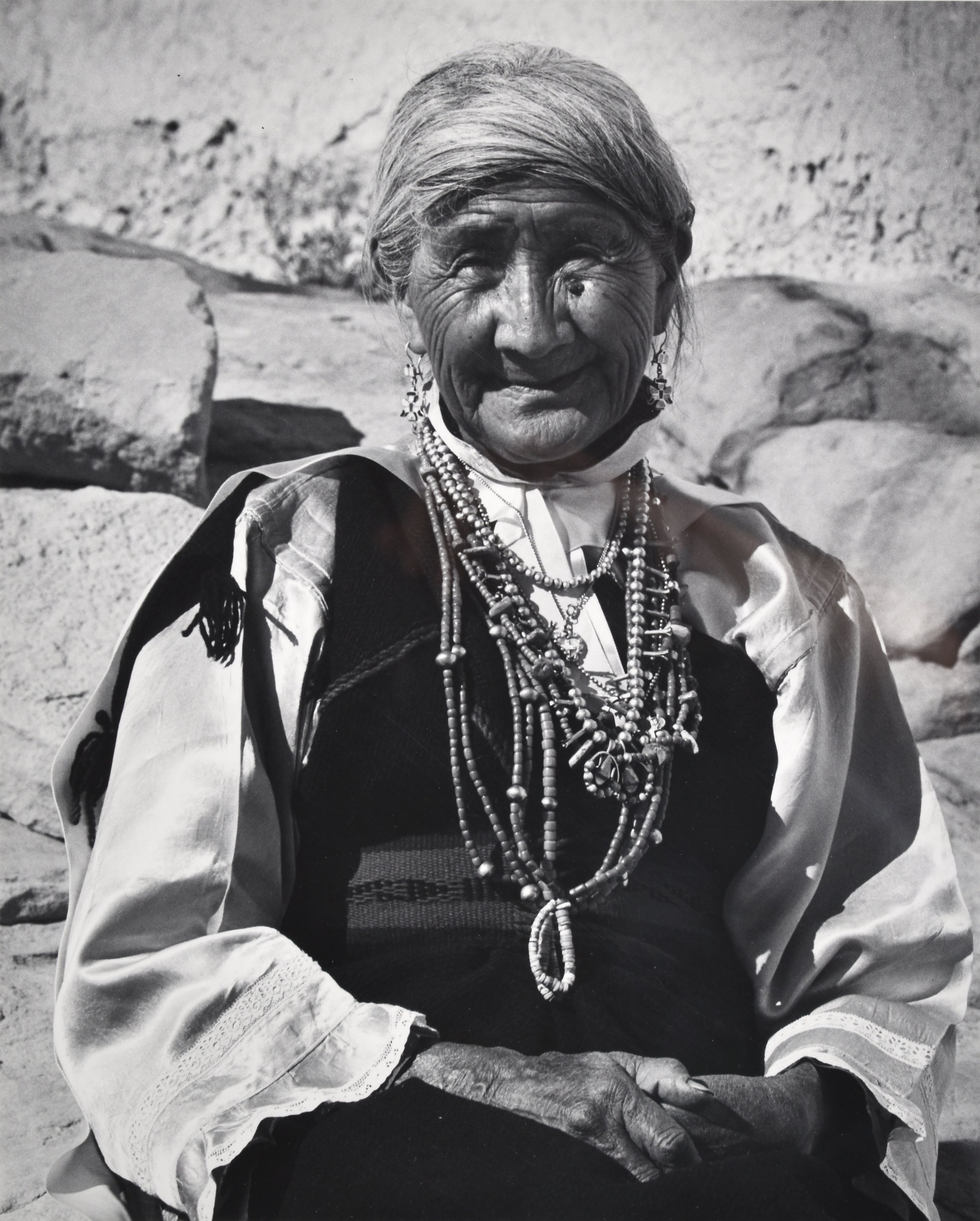Thoughts on the Photography of Lee Marmon
Photographer Lee Marmon, as part of exhibit Between Two Worlds at the Albuquerque Museum. Photo by Clarke Condé.
The new retrospective exhibit of photographer Lee Marmon’s work, Between Two Worlds, at the Albuquerque Museum is a tribute to a photographer who was pivotal in the shifting of perceptions of Native Americans that began after WWII and continues to this day. While the impact Marmon had on how Native Americans were seen in the mid-20th century is undeniable, the remarkable thing about Marmon’s photography itself may be how unremarkable the photographs actually are. I say that not to run the man down, but to highlight what truly makes Marmon a remarkable photographer.
Lee Marmon, White Man’s Moccasins, 1954, gelatin silver print, Albuquerque Museum, gift of Cate Stetson, PC2021.72.28
Marmon was a decent photographer. Not great, but solidly good. His style of photography was very much in keeping with his contemporaries in American photography. His use of light and his compositions, they are all within the realm of professionals of his time. He is on par with the other photographers at a Bob Hope Classic.
Lee Marmon, Rosita Johnson, 1958, gelatin silver print, Albuquerque Museum, gift of Cate Stetson, PC2021.72.20.A
What sets Marmon’s photography apart was not the quality of his work, nor was it simply his subjects (specifically the one of his two worlds that involved Native Americans), but that he was able to approach his subjects as an embedded photographer. Further, Marmon’s work benefited enormously from a rare trait found in few photographers that speaks to the quality of Marmon as a person. He was trusted.
Lee Marmon, Walter Sarracino, 1963, gelatin silver print, Albuquerque Museum, gift of Cate Stetson, PC2021.72.19.A
To be in the room so to speak, to be an embedded insider, to have access to rare subjects is one thing, but to be trusted by them is another. You can see that Marmon had the trust of his subjects in his portraits. It is because of this trust his subjects had that we are allowed to see the change in depictions of Native Americans in his photographs. It is clear that many of the Native Americans that he photographed weren't trying to match the expectations of outsiders in their appearance because they trusted him to accept them for who they truly were. Part of this trust may have gained entry through his ethnicity (Marmon was from Laguna Pueblo) but it was earned by how he worked. Asking permission of his subjects. Returning with prints. Not simply taking and exploiting, but showing people what he was doing (and not doing) can all be credited with his success. His portraits have a genuine quality that is available only to photographers that have earned the trust of their subjects and, most importantly, have the ability to make a choice to show them. It is for that reason that we can see through his lens that these are real people, living their normal lives at the time, rather than a "vanishing race" or "noble savages" living some myth. In this lies Marmon’s importance and the importance of this exhibit.
As an aside, it is also worth noting that many pieces in the exhibit are original, signed and numbered prints, matted to be displayed as such. It may be a small detail, but something I appreciate as part of exhibit craft. The museum did a great job sourcing the work and putting it together as a history lesson as much as a photography exhibit. Lee Marmon is a New Mexico original and his life and work is well worth study and reflection within the context of our state and the changing perceptions of Native Americans over time, as well as the cannon of American photography.
Between Two Worlds: The Photography of Lee Marmon
Through January 15, 2023
Old Town





